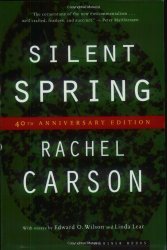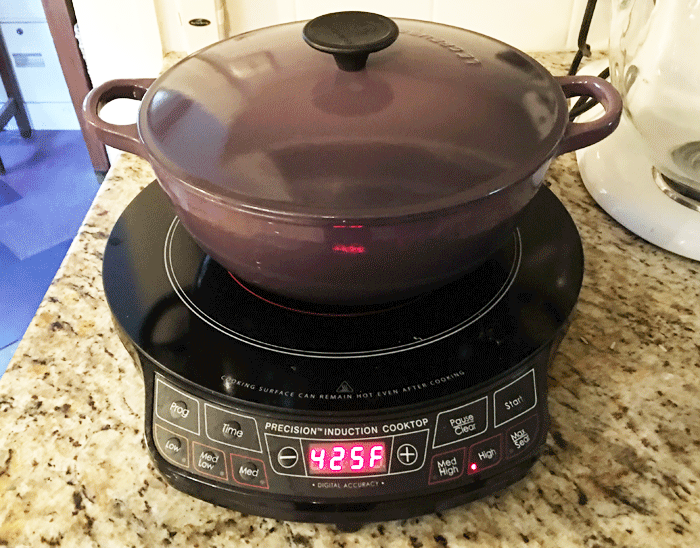
Submitted questions will be posted with my response by the following Tuesday or before.
Submitted comments will be moderated and approved within 24 hours.
Any Experience with Hypnos or Saatva Mattresses?
I’ve received two comments asking about these mattresses.
Specifically these readers are wanting to know if anyone has experience with these mattresses—good or bad.
Hypnos is a long established manufacturer from the UK that uses “natural and sustainable” materials, but doesn’t say what they are. They use such luxurious materials as cashmere, camel hair, silk and alpaca for covers over a British wool-and-polyester cushioning. No mention of any materials being organic.
Saatva has organic cotton covers over polyurethane foam (they say it’s bio-based but it’s only a small percetage of bio). They also have a natural latex foam (not organic) mattress.
Thank you.
PBS Honors Rachel Carson on TV Show “American Experience”
Tonight, your local PBS station will air a new episode of “American Experience” about the life of Rachel Carson. Check your local television listings for the time. Here on the east coast it will be airing at 8:00 pm.
 I highly recommend watching this to learn more about Rachel Carson’s life, her viewpoints, and how her book Silent Spring acted as the catalyst for our current awareness of toxics, the environmental movement, and the founding of the Environmental Protection Agency (EPA). I’ll be watching.
I highly recommend watching this to learn more about Rachel Carson’s life, her viewpoints, and how her book Silent Spring acted as the catalyst for our current awareness of toxics, the environmental movement, and the founding of the Environmental Protection Agency (EPA). I’ll be watching.
In conjunction with this, the New York Times ran an article yesterday: Rachel Carson, DDR and the Fight Against Malaria. It has a 12 minute video that also is well worth watching.
This video gives a good picture of why it’s so difficult to get toxic chemicals banned. Toxic chemicals are generally in use for a reason. In the case of DDT, at first it was to kill mosquitoes that cause deadly malaria. DDT was so effective with mosquitoes, it soon became used widely. Carson documented the health and environmental effects and soon DDT was banned.
But without DDT to control disease-carrying mosquitos, malaria soon again became epidemic.
This video shows how we can think beyond using toxics for a quick-fix and come up with more lasting sustainable solutions.
Polar Bear Cubs (and Humans) at Hight Risk from Toxic Industrial Chemicals, Despite Bans
A new story in Scientific American reports levels in polar bear cubs are 1000 times the acceptable level for humans.
“These persistent organic pollutants, or POPs, come from industry and reach the Arctic via air or ocean currents. The compounds include older chemicals like PCBs (polychlorinated biphenyls), whose production peaked in the late 1960s and early 1970s, and relatively newer ones including perfluorinated chemicals, which are used in water-resistant fabric coatings and firefighting foam. The pollutants have been linked with reproductive and immune problems in the bears as well as cancer, and their chemical structures make them nearly impossible for organisms to degrade.”
Bears accumulate high levels of the chemicals because they are top predators (just like we are).
Chemicals accumulate in both bears (and humans) because they build up through the food chain, in plants, fish and, for bears, finally seals—the bears’ main food source. Many of the compounds concentrate in the seal blubber, giving bears a hefty dose of chemicals when they eat seal blubber. The pollutants are then transferred to cubs via their mothers’ milk.
(And the same happens with humans.)
The study notes that between 1985 and 2010 the overall risk in cubs declined by 30 percent because many of the older chemicals were banned. Despite this progress, however, chemicals produced more recently are keeping the risk high. And these new chemicals, as well as the replacements for banned chemicals, are now being found in polar bear cubs in the arctic, thousands of miles from industrial civilization.
(It’s just interesting to me that this article, which is an environmental piece, makes no connection to the similar human exposure. The references to humans in this post are all mine.)
SCIENTIFIC AMERICAN: Polar Bear Cubs at Hight Risk from Toxic Industrial Chemicals, Despite Bans
Scientists Prove Link Between Aluminum and Early Onset Alzheimer’s Disease
We already know that aluminum is present is many consumer products, and that it builds up within our bodies rather than passing through.
Though a link between aluminum and Alzheimer’s Disease has been suspected for many years, even as recently as 2014 the link was largely unproven.
Now things have changed. Read more at…
GREENMEDINFO: Scientists Prove Link Between Aluminum and Early Onset Alzheimer’s Disease
Detoxing Aluminum Through Your Skin In A Simple Way At Home
 My guests today are Elizabeth and Michael Fessler, Founding Partners of Herbalix Restoratives. They make exceptional skin and hair products, some of which detox aluminum from your body as you sleep. Their products are designed to support skin functions with pure, natural and organic ingredients that cleanse and revitalize, while feeding the skin and hair vital nutrients. Today we will be focusing on their detox products. We will be talking about how aluminum enters your body and affect body function, and how topical detox can free the body from aluminum so it can function properly.
My guests today are Elizabeth and Michael Fessler, Founding Partners of Herbalix Restoratives. They make exceptional skin and hair products, some of which detox aluminum from your body as you sleep. Their products are designed to support skin functions with pure, natural and organic ingredients that cleanse and revitalize, while feeding the skin and hair vital nutrients. Today we will be focusing on their detox products. We will be talking about how aluminum enters your body and affect body function, and how topical detox can free the body from aluminum so it can function properly.
Audio + Transcript:
TOXIC FREE TALK RADIO: DETOXING ALUMINUM THROUGH YOUR SKIN IN A SIMPLE WAY AT HOME
The Challenge of Finding Product Information
Over the holiday I had reason to do some research on two products.
Both were products I had researched in the past. One was a product that I was considering purchasing for myself (the enameled pot I wrote about last week); the other was a product I was researching for a client.
The enameled pot was available as a brand name product and also as a “knock-off.” I had already researched the brand name possibilities, but not the knock-offs. Since this was a fairly pricey item, I really wanted to buy a knock-off but every time I looked at one, I just felt nervous and didn’t want to take a chance. Particularly since I would be using it for cooking food.
I knew the materials used in the brand name pots because I could call their customer service and get the information. But the knock-offs…you can’t even find out who to call. Store brands usually don’t manufacture their own goods and can’t answer questions. And so in the end I went with the brand name item and felt confident that I knew what the materials are.
That said, researching the other product for my client was a completely different experience. With this product it was very difficult to get any information calling the manufacturers. I really got the runaround. But I did persist and finally did get some of the information I was looking for. By contrast, when I contacted the smaller manufacturers who make this product, most of them responded immediately and were happy to talk with me in detail about their materials. One man had worked for the company for thirty years and we had a long talk. On the other hand, one brand had no manufacturer listing at all and I could even find a website for them.
My conclusion from this experience was:
- MAJOR MANUFACTURERS may or may not know much about their product materials, but at least you can generally contact them and ask
- KNOCKOFFS probably won’t know anything about their materials and you won’t be able to reach the actual manufacturer
- SMALLER MANUFACTURERS generally know most about their materials and are happy to tell you
Transparency and disclosure is a big issue I am working on for 2017. As I’ve said before, every product should fully disclose all materials in a format that is easy for consumers to understand.
This is why last year I started Debra Lynn Dadd Recommended Products, to help business communicate with consumers about their materials. Through this program, I write a Materials Review for products, which lists the materials and also gives background information to help consumers make decisions about the products.
Until all products have this level of transparency and disclosure, stick with brand name products and small businesses, where you can actually talk with someone and ask your questions. If there is no brand name or contact information, don’t buy the product.
Buy from reputable companies that know their materials and are willing to communicate about them.
Splenda Suppresses Thyroid Function, Promotes Weight Gain
This new article from GreenMedInfo.com outlines the range of health effects associated with sucralose (aka Splenda), including the first study to evaluate the effects of Splenda (Sucralose) on thyroid function and metabolism in mammals.
GREENMEDINFO: Spenda Suppresses Thyroid Function, Promotes Weight Gain
A Safe Alternative Slow Cooker

After writing this post I found that I actually first suggested this in 2013.
One of the things I love about Larry is he is really good at coming up with “thinking-outside-the-box” solutions to toxic exposures.
For some years one of the most frequently asked questions is “What slow cooker can I use?” And I’ve always had to say “I don’t know of one that doesn’t have lead in the glaze on the pot.” The only exception to this is the Vita Clay cooker, with an unglazed pot, but this is a rice cooker, not a crock pot of any size].
As some of you know, Larry has been living in California with his parents for the last few years while recovering from an accident. And now he’s in the process of moving back here with me.
While staying with his parents, he saw his father cooking on an induction cooktop. Because he and I both have a tendency to put food on to cook, set a timer and walk away and not hear the timer, he thought we should get one so it will just turn off at the right time and not burn. And that was reason enough for me to agree we should explore the possibility.
An induction cooktop is like a hotplate, but heats food with magnetic induction that directly heats the cooking vessel, so the pot can heat food rapidly. You can also set it to exact temperatures and cooking times, so it will turn off automatically, even if you forget to come and turn it off. It’s so precise, many chefs now use it. It’s easy to carry and can setup anywhere there is and electric plug. So it pretty much can function as a slow cooker.
Magnetic induction doesn’t release toxic pollutants into the air like the combustion by-products from gas. It of course would release some EMFs, but I couldn’t find any data on this. I imagine it wouldn’t be more than an ordinary crock pot and maybe even less.
My biggest concern was the pot. Magnetic induction doesn’t work with my Xtrema cermamic cookware because the cookware needs to be made of a material that is magnetic. You can test any cookware by putting a magnet on it—if it sticks, it will work for magnetic induction. Or look for the induction-ready symbol, or search online for “induction-ready cookware.”
We did some research and decided that the best cooking vessel for us to buy to use with the induction cooker was a cast iron pot with a porcelain enamel finish on the inside. I had already researched Le Creuset and was comfortable with the Le Creuset enamel finish so we bought a Le Creuset soup pot that happened to be on sale at Marshall’s, of all places.
We love this! And we haven’t burned anything since.
We got the NuWave Precision Induction Cooktop. But there are also other brands. We couldn’t find these in stores, but there are many styles on the Internet. We chose this one because it was the one Larry’s father uses and Larry wanted the same one.
NuWave also sells a full line of induction-compatible cookware that has a Duration “ceramic” finish. I called NuWave Customer Service at 1 855 742 2665 and asked what the Duration finish is made of. I found out that they actually have a number of different finishes on various cookware sets and they don’t know what any of them are made from.
I found Duralon online at what looks like the manufacturer’s website. They are in Australia, so they are not available as I am writing this. They have several Duralons made from nylon reinforced with glass or glass and minerals. That’s all I could find. Nylon in general is one of the safest plastics and can be used without melting at very high temperatures.
So while I can’t recommend NuWave’s induction cookware, I can say I’m very happy with my NuWave induction cooker
So this morning, after writing this yesterday, I got up early. I had been soaking beans overnight to cook this morning. Because Larry was still asleep and I myself hadn’t yet learned to use the induction cooker, I decided to just cook the beans “the old way” on the stovetop. Well, the beans boiled over and I had to relight the gas burner and I thought, “If I would just learn to use this induction cooktop, I could just set it to one temperature to bring it to a boil and then program it to other temperature to simmer the beans and then program it to turn off.” And that quite delighted me. I just now need to figure out those perfect cooking times and temperatures and I’ll be able to do that. It’s a whole different thinking process about cooking.
More on Slow Cookers
We’ve been discussing slow cookers on this blog for years.
Just this last week a reader posted a comment and said that recent tests had found some crock pot glazes to be free from lead!
And she sent me the link: TERMINAl VERBOSITY: The skinny on lead in crackpots—It may surprise you!
The anonymous blogger wrote (in 2009) “I don’t like ambiguity, especially when it comes to the health of my children. So I was alarmed when I couldn’t find a satisfactory answer to the question: “Do modern-day crock pot glazes contain lead that can leach into my food?”
So she found the FDA guidelines, called manufacturers, and tested crock pots herself. And she found ZERO LEAD in the top five brands.
Here are some other interesting links from my reader regarding lead glazes in crock pots:
ECO-FRIENDLY BABY/FAMILY PRODUCTS MADE IN USA: Lead in Hamilton Beach crock pots
Regarding this second link my reader wrote, “The lady at Lead Safe America has sons who are lead-injured, so I find her work informative, as she knows firsthand what lead poisoning looks like. It seems to me that some of the crocks contain very low lead because it is inherent in the raw materials, not added in the glaze; I believe that is the point she makes. And this is the same argument made by the Earthpaste toothpaste company — that the lead in their toothpaste is natural in the raw materials. I see that the black Crockpot brand pot at the second link tested as completely lead-free.”
Get an induction cooker and you can choose your cookware. And you can cook in all different sized pots and pans.
More on Aerotoxic Syndrome
In July 2015 I interviewed a former flight attendant on Toxic Free Talk Radio regarding aerotoxic syndrome—a condition caused by toxic chemical exposure during airplane flights. TOXIC FREE TALK RADIO: Aerotoxic SyndromeL How Flying in Airplanes can Affect Your Health
This week, GreenMedInfo has a new investigative report on toxic exposures in the aviation industry.GREENMEDINFO: “Asbestos of the Sky”—The Aviation Industry’s Darkest Coverup
And here’s a documentary about aerotoxic syndrome: UNFILTERED BREATHED IN—The Truth about Aerotoxic Syndrome
And here’s an article about how pesticides are sprayed on passengers: NATURALHEALTH365: Government advises airlines to spray pesticides on passengers. If this title sounds alarming, check out this report that explains when and why pesticides are sprayed: Flyers Beware: Pesticide Use on International and US Domestic Aircraft and Flights
Clothing Companies in India are Cleaning Up Their Act
This week The Washington Post published a piece about health and environmental effects of clothing production in India, and and how “A new crop of small businesses are investing in organic farming, natural dyes and a transparent supply chain that encourages shoppers to think about the effect of their purchases.”
Good news.
Cotton organic towels
Question from Meryl
Hi Debra,
Thanks for a great site!
I am looking for organic cotton bath towels and bath mat in beige for my bathroom.
Do you have any new recommendations?
Thanks very much for any info!
Debra’s Answer
This was not difficult to find online.
I just typed “organic cotton bath towels beige” into Google and got a number of responses.
Here are some from a popular online retailer:
Here are some other choices…
Plenty to choose from. Also more at Debra’s List: Bath Linens








